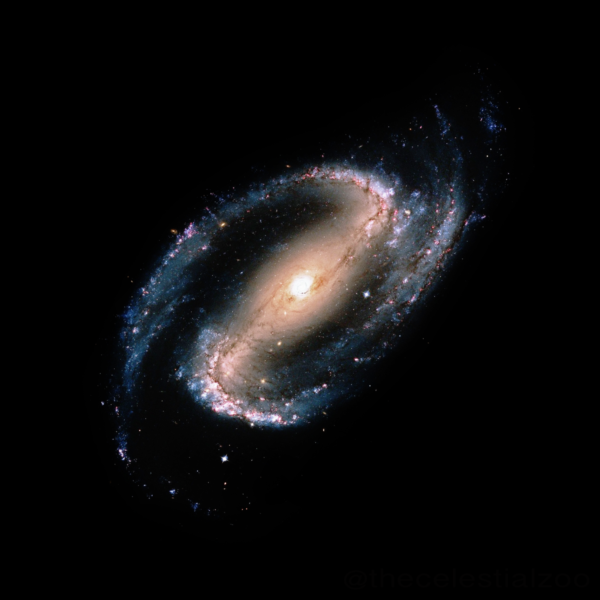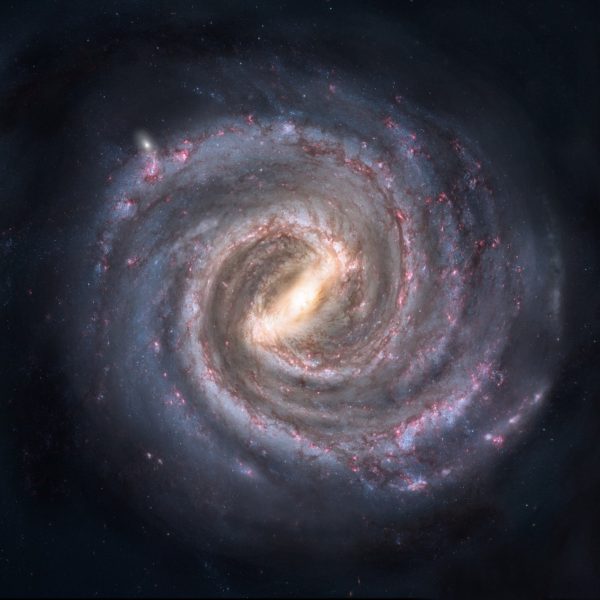A galaxy is a huge collection of gas, dust, stars, planets, and its solar system. The components of a galaxy are held together by gravity. Galaxies are scattered throughout the universe and are very large. It should be noted that all galaxies are not alike and each galaxy has its shape. If you are interested to know about galaxies, stay with us up to the end of the article.
What is a Galaxy?
A set of stars, gases, planets, moons, dust and interstellar space that are affected by the same gravity is called a galaxy. There are more than 100 billion galaxies in the universe that vary in size, mass, and luminosity. Their general shape may be elliptical, spiral, lenticular, or irregular. The diameter of galaxies is usually about a few thousand light-years and consists of billions of stars. Some can be seen with a telescope and some with the naked eye.
The size of galaxies
The smallest galaxies are several hundred light-years across, containing about 100,000 billion star years. The largest galaxies are up to 3 million light-years across and contain more than 1,000 billion stars. Galaxies in the universe are islands separated by thin space.
What are the types of galaxies?
In 1926, Edwin Hubble decided to classify galaxies. Hubble decided to make this division according to the difference in the appearance of the galaxies. The following presents four main types of galaxies in astronomy.
1. Elliptical Galaxy:
Elliptical galaxies have a circular shape and do not have spiral arms. Elliptical galaxies have the highest number of other types. The shape of elliptical galaxies refers to the old age of these galaxies.
Types of Elliptical galaxies
Types of elliptical galaxies include the following:
- M49
- M59
- M89
The main features of elliptical galaxies
The main feature of elliptical galaxies is several things that distinguish them from other classes of galaxies.
- They are spherical masses of stars left over from stellar gases.
- There is very little interstellar matter (neither gas nor dust) in these galaxies
- Older stars are found in these galaxies, which is why the color of these galaxies is red.
- Large elliptical galaxies usually have an extensive system of spherical clusters.
2. Spiral Galaxy:
Spiral galaxies have arms called spiral arms in astronomy. These arms, in a spiral shape around the central bulge or nucleus, form a disc that rotates with the rotation of the arms. The youngest stars in spiral galaxies are found in low-mass arms, and older stars are often located in dense nuclei. there is a lot of dust and gas in these arms.
The most famous spiral galaxies are:
- Andromeda Galaxy
- The Milky Way
- Spinning Galaxy
- Sunflower Galaxy
- Galaxy Triangle
- Whirlpool Galaxy
Different parts of Spiral galaxies
- A Spiral galaxy is made up of several distinct parts:
- A flat, rotating disk of stars and interstellar matter whose spiral arms are prominent components.
- A central star protrusion from mostly older stars resembles an elliptical galaxy.
- Distribution of star-shaped bars
- An almost spherical halo of stars, including many halos in spherical clusters
- The large black hole in the center of the central bulge
- An almost spherical halo of dark matter
3. Irregular galaxy:
Heterogeneous or irregular galaxies have no order or structure, they have more mass than other galaxies, and most of the stars in them have short, bright lifespans. Although many heterogeneous galaxies contain glowing regions in which stars are formed, most interstellar gas in galaxies must be compressed to form new stars. The Coddington Nebula, or IC 2574, is an irregular dwarf galaxy moving away from us at 55 kilometers per second.
4. Lenticular galaxy:
A lenticular galaxy has an elongated, rod-shaped middle ridge core. A bulge is a large, completely closed group of stars. This type of galaxy, like the symbolic Sombrero galaxy, is located between elliptical and spiral galaxies. These galaxies are called lens galaxies because they look like lenses. Like spiral galaxies, these galaxies have a thin, rotating disk of stars and a central bulge, but no spiral arms. Also, like elliptical galaxies, these galaxies have little dust and interstellar matter and appear to form mostly in densely populated areas of space.
The structure of galaxies
A galaxy is a very large gravitational range consisting of stars, gases, interstellar dust, dark matter, and possibly dark energy. Some known galaxies in the universe have tens of millions to tens of thousands of billions of stars that are all around.
What are active and abnormal galaxies?
All galaxies emit an obvious amount of electromagnetic reflection. These active galaxies have large amounts of radiation. Their energy comes from a massive but compact mass in the middle of an active galaxy. Most of the energy of X-rays is radio waves as well as light, and the amount of energy released is so great that it cannot be imagined by the stars. Astronomers believe that the only object that can release this amount of energy is an extremely massive black hole. So, the reason why some galaxies, such as our galaxy, release more or less energy is that they have a small middle black hole.
What are Radio galaxies?
Radio galaxies are a type of active galaxy. They are elliptical galaxies that emit gas jets from their center. These jets scatter radio waves under the influence of an accelerating process (synchrotron, or acceleration of electrons in intense magnetic fields). About one hundred percent of all galaxies are the radio. The brightness of a radio galaxy at radio wavelengths is from one-tenth to ten times the brightness of a Milky Way galaxy at all wavelengths.
Conclusion
A galaxy is a huge collection of gas, dust, stars, planets, and its solar system. It should be noted that not all galaxies are alike and each galaxy has its shape. Our Milky Way galaxy has a very heavy black hole in the middle, and the very high gravity of this black hole causes the galaxy’s components to stick together. Some galaxies, like ours, are spiral. Other galaxies are flat in shape and are called elliptical galaxies. Some galaxies are not spiral or elliptical. The light we see from each of these galaxies comes from the stars inside those galaxies.








Contact me

